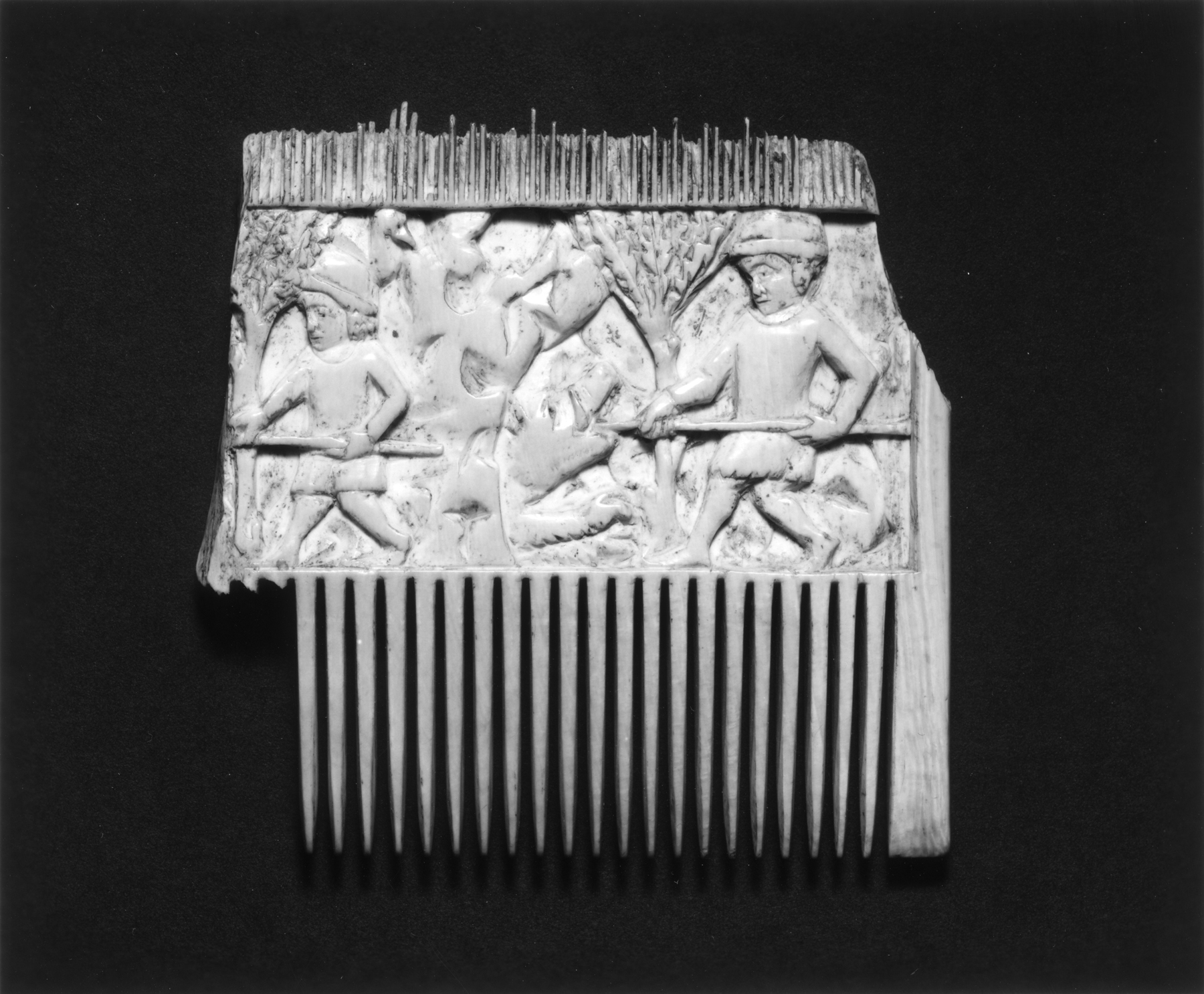Comb with Lady Love and a Hunting Scene
(Renaissance Europe )
The comb is carved on either side in two sunken panels between the teeth; about three-quarters of each scene is preserved. On one side Lady Love sits enthroned, presenting mantled helms to kneeling knights. The knight on her right wears a steel cap and coif, a jupon with a dagged edge (brigandine (?)) and hose. The second knight, who is standing, is helmetless and holds a spear and shield; the third, also standing, wears a cloth hood with a dagged edge.
On the reverse is a hunting scene with two men wearing hunting hats with turned-up brims. In a setting defined by two stylized trees, the first figure spears a boar emerging from a rocky landscape; the second figure spears a missing animal. Traces of gilding and color remain. The comb is broken nearly in half, and all its smaller teeth are missing.
Several combs in a similar style exist.
Provenance
Provenance (from the French provenir, 'to come from/forth') is the chronology of the ownership, custody, or location of a historical object. Learn more about provenance at the Walters.
Collection of Victor Martin Le Roy (1842-1918), Neuilly-sur-Seine. Acquired by Léon Gruel, Paris, ca. 1924 (?); purchased by Henry Walters, Baltimore, 1925; by bequest to Walters Art Museum, 1931.
Exhibitions
| 1988-1989 | Africa and the Renaissance: Art in Ivory. Center for African Art, New York. |
Geographies
Italy, Milan
(Place of Origin)
Italy, Lombardy (Place of Origin)
Measurements
H: 3 9/16 x W: 3 11/16 in. (9 x 9.3 cm)
Credit Line
Acquired by Henry Walters, 1925
Location in Museum
Not on view
Accession Number
In libraries, galleries, museums, and archives, an accession number is a unique identifier assigned to each object in the collection.
In libraries, galleries, museums, and archives, an accession number is a unique identifier assigned to each object in the collection.
71.78






